Traveling by train in Peru is not just a practical way to move between major destinations, but also a fantastic way to soak up the incredible landscape. Train travel in the country has a nostalgic feel and allows riders to view nooks and crannies that they might not otherwise get to see when traveling by car. And one of the best train routes in Peru is the popular journey to Machu Picchu, starting from either Cusco or Ollantaytambo. Sure, trekking to Machu Picchu is a bucket-list experience, but taking the train is, too — it’s certainly not your average commuter train.
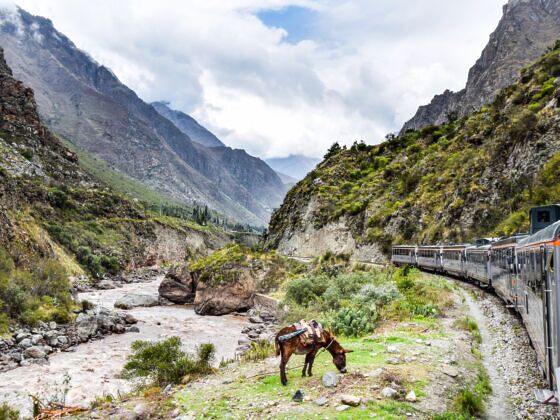

The Inca Rail to Machu Picchu Is the Prettiest Train Ride in South America
There are two major train companies that run this route: Inca Rail and PeruRail. I took the 90-minute Inca Rail train from Ollantaytambo to Aguas Calientes, a town also referred to as Machu Picchu Pueblo. Doing this shorter route from Ollantaytambo leaves time for exploring the stunning Sacred Valley, as well. Your destination will be the village of Aguas Calientes, which will serve as your home base for visiting Machu Picchu. From town, the actual archaeological site is accessed via bus along a very windy road to the ancient citadel ruins.
May to October is the dry season and the best chance for good weather while visiting Machu Picchu, with the peak travel months stretching from June to August. The only way to tour Machu Picchu is with a certified guide, and with an entrance ticket purchased well in advance through the official website. Currently, the Ministry of Culture of Peru uses 4,044 guests as the daily capacity for visitors to Machu Picchu, until December 2023. You can hire guides on the spot at the entrance, set up a guide beforehand through your hotel, arrange a guide in the town of Aguas Calientes, or buy a tour through official organized tour company. The cost is usually around $50.
Here’s what you can expect to see along the gorgeous three-hour, round-trip journey.
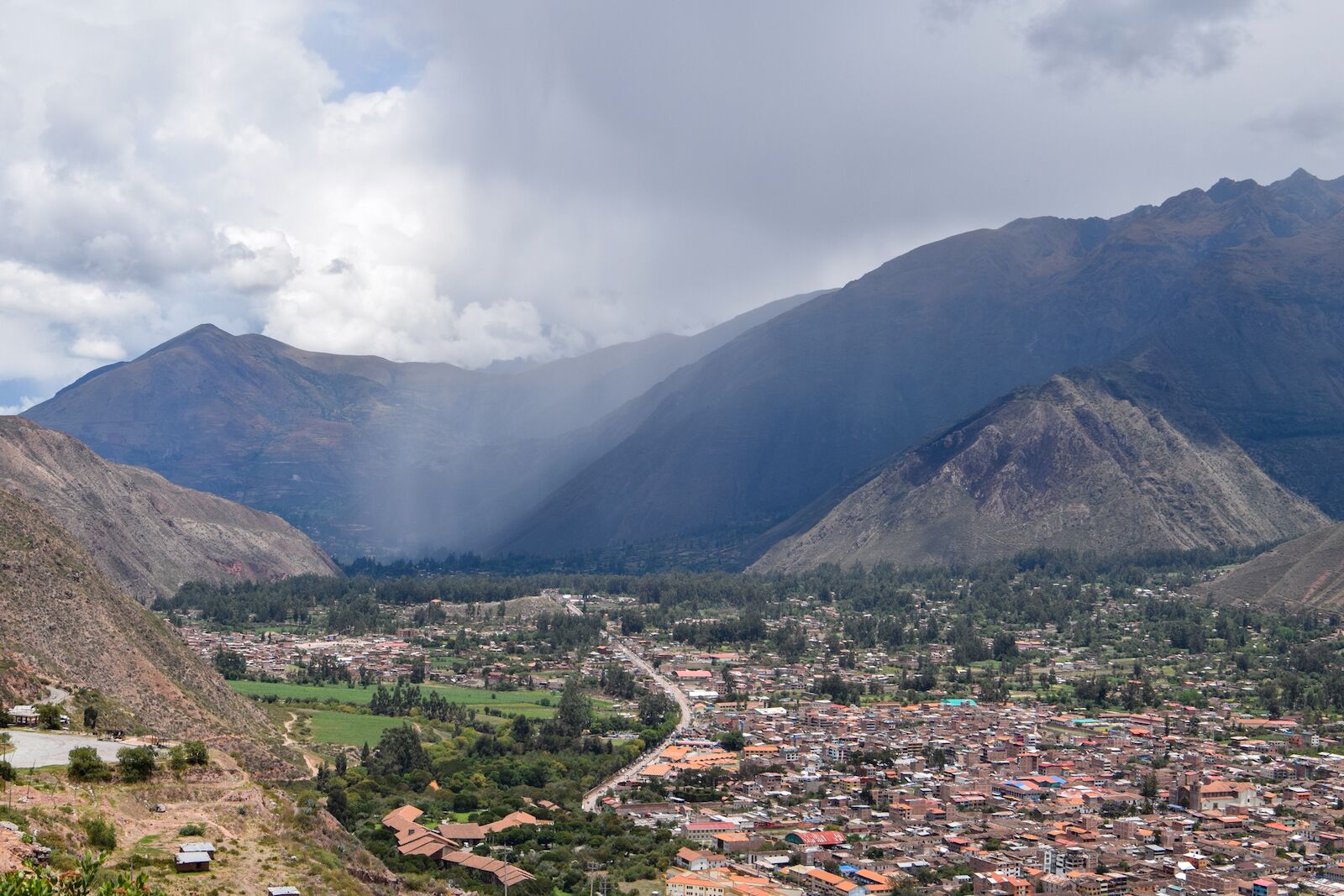
Photo: Lauren Breedlove
Ollantaytambo is a village along the Urubamba/Vilcanota River in Peru’s Sacred Valley. It’s also the main jumping-off point for the trains to Machu Picchu. It’s called the “stone city” (for obvious reasons once you see the stone streets and walls dating back to Incan times). It’s also known for being the start of the Inca Trail, but has its own sets of often-skipped-over ruins: a ginormous Inca fortress with stone terraces, and the famous Templo del Sol – a true archeological wonder.
The town is about an hour and half from the city of Cusco and reachable by bus, car, or train. Ollantaytambo is where you’ll hop aboard the Inca Rail train to Machu Picchu — but don’t rush through it. Leave some time to wander the old town, perusing the local market goods or grabbing a drink in the Plaza de Armas.
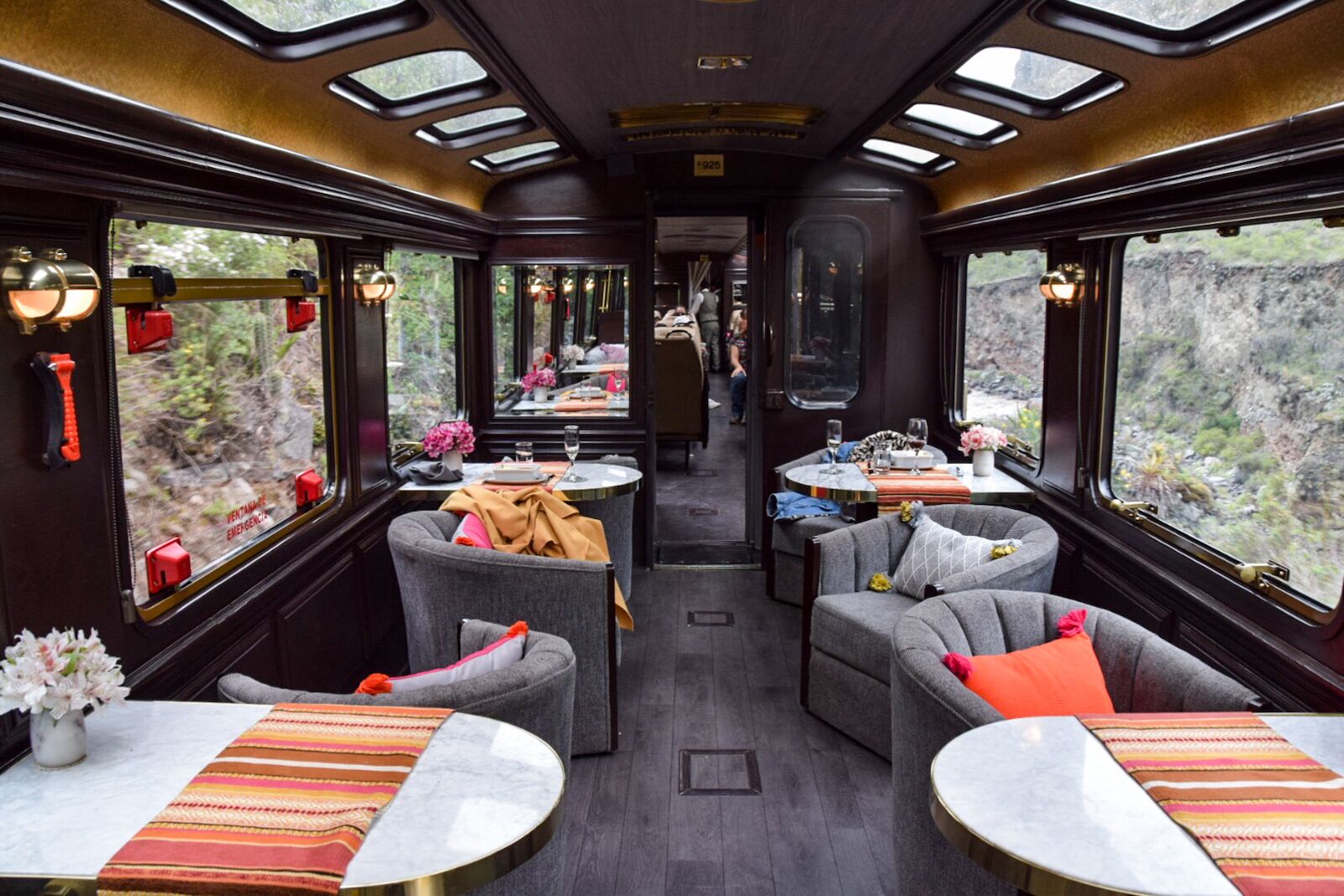
Photo: Lauren Breedlove
Inca Rail offers four different trains: the First Class, Voyager, 360, and private. I highly recommend booking a First Class ticket for the way there. That’s because those cabins have a hip and very photogenic cabin interior, full meal service, live music in the lounge car, and access to the observatory wagon with a balcony so you can grab photos of the Andean splendor without that pesky window glare getting in the way. Plus, the excitement level of Machu Picchu being within reach adds to the whole experience. It’s a comfortable way to make the trip with a bit of added VIP treatment.
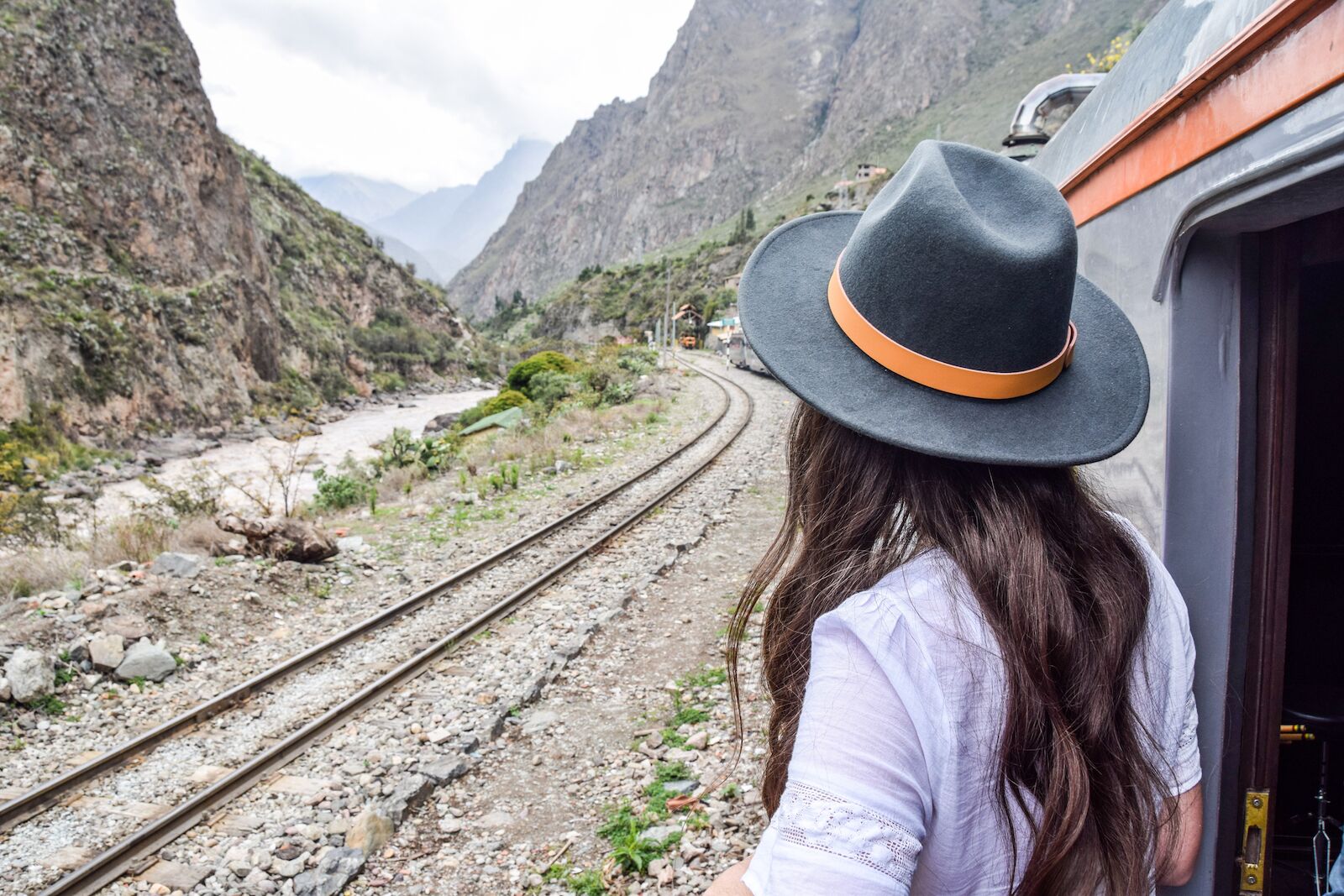
Photo: Lauren Breedlove
Passengers can only bring one piece of hand luggage aboard, and there are restrictions on size and weight (up to 17 pounds). However, you can store the rest of your luggage at the Inca Rail office in Ollantaytambo, regardless of what ticket you buy.
Once you’re on settled on the train, it’s hard to tear your eyes away from the panoramic windows and keep yourself from constantly popping out to the little balcony in the observatory wagon; the scenery is that mesmerizing. What makes it even better is the welcome cocktail and promise of gourmet food set to the soundtrack of the Peruvian flute. Oh, and the cushy seats — those too.
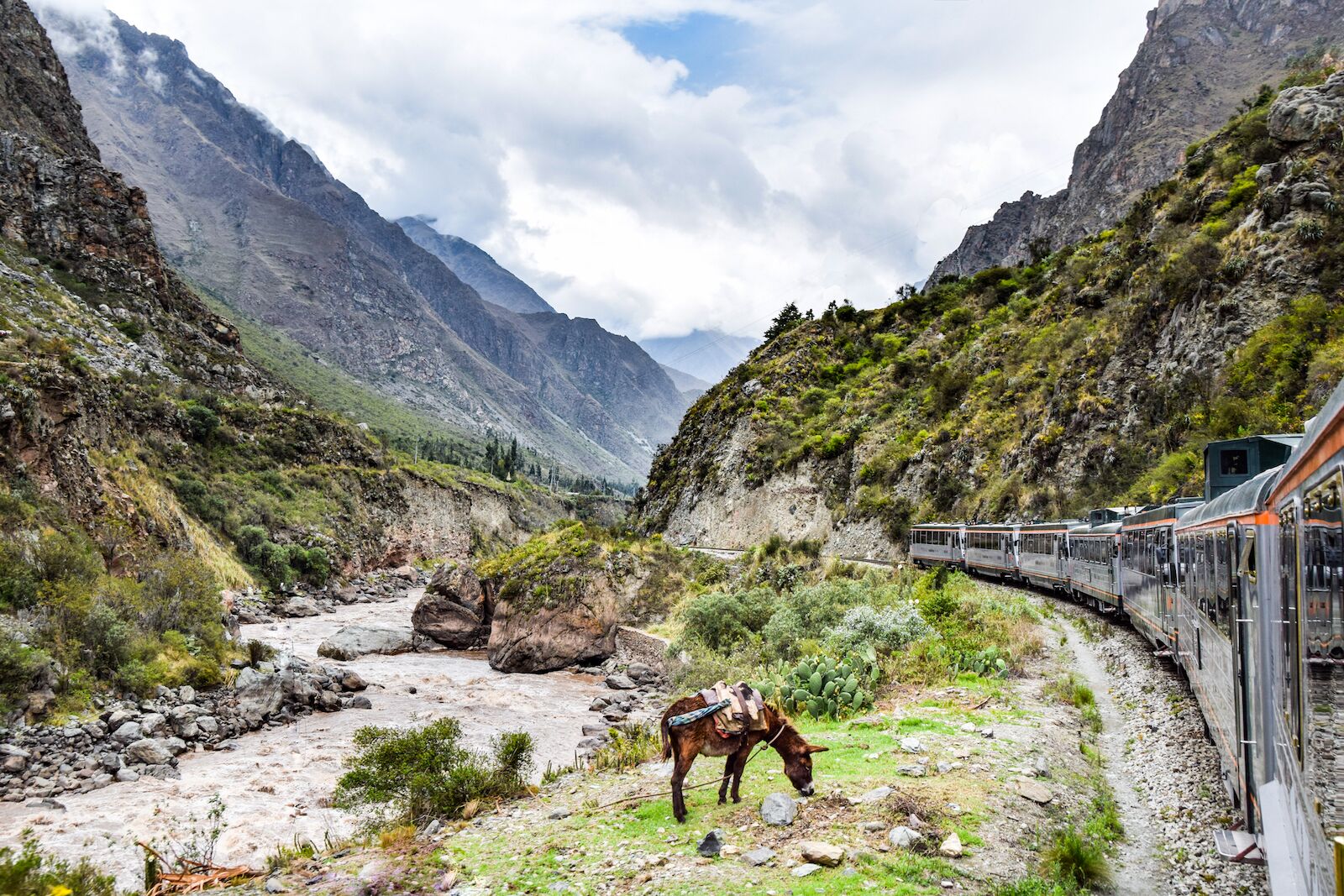
Photo: Lauren Breedlove
The cost for tickets on the Inca Rail to Machu Picchu start at $65 one way for the Voyager train, $83 for the 360 train, $216 on the First Class train, and $5,500 for a private train, which may be a good option if you have a big group or travel club. If you’re on a budget but want to splurge on the Inca Rail First Class experience, it’s smart to book it for just one way, and do the cheaper Voyager on the return trip. That’s what I did, and I loved it.
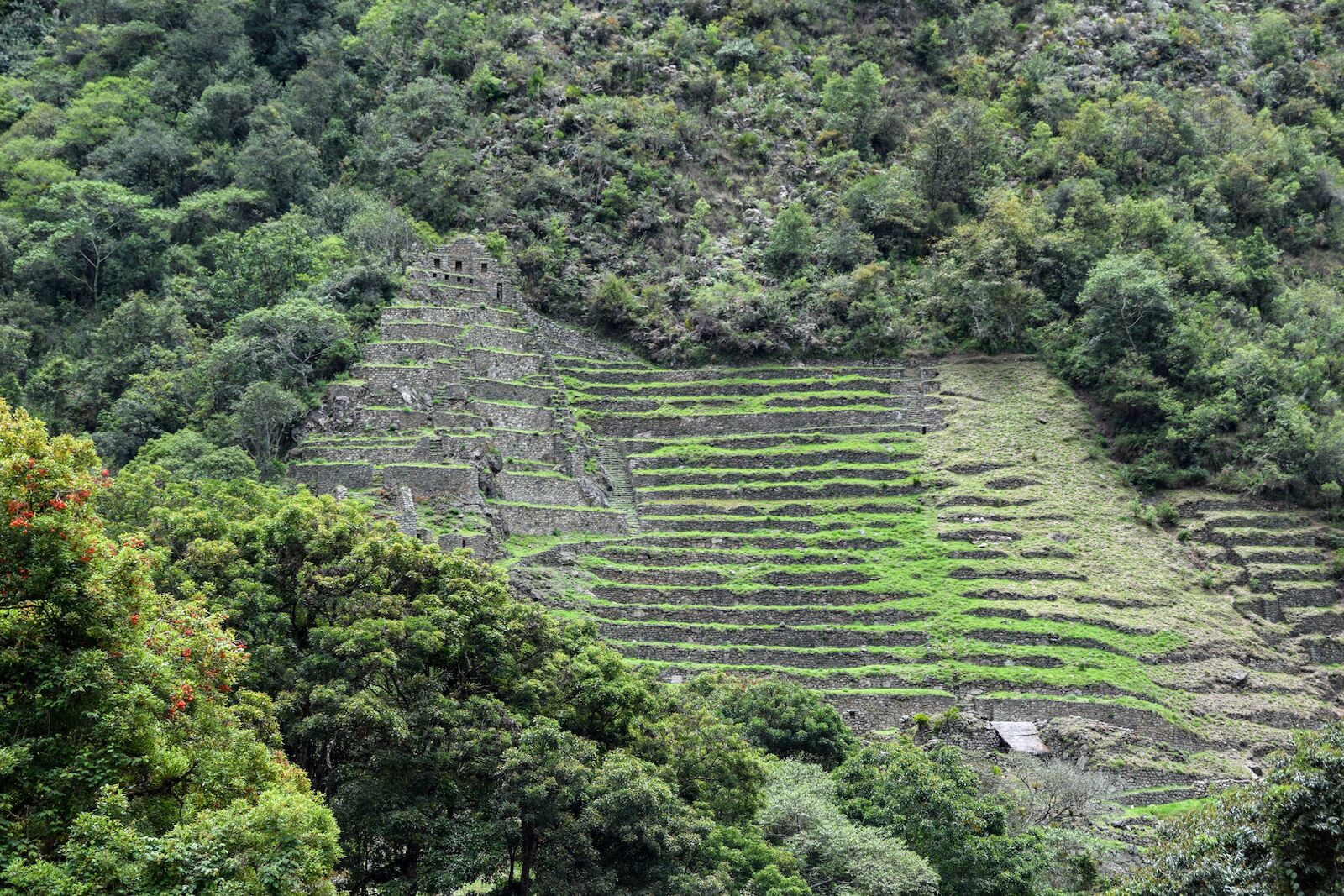
Photo: Lauren Breedlove
The train route follows the Vilcanota River, weaving through the snow-capped Andes mountains and passing valleys dotted with the occasional village, hillside ruins, and donkeys, of course. Each bend offers more and more eye candy; it’s definitely a photographer’s dream. Keep your eyes peeled for the ancient civilization ruins of Torontoy, Chachabamba, and more tucked into the mountainside. Whether it’s sunny or raining, it’ll be gorgeous — in fact, rainy days can be even prettier, when the valleys fill with mist.
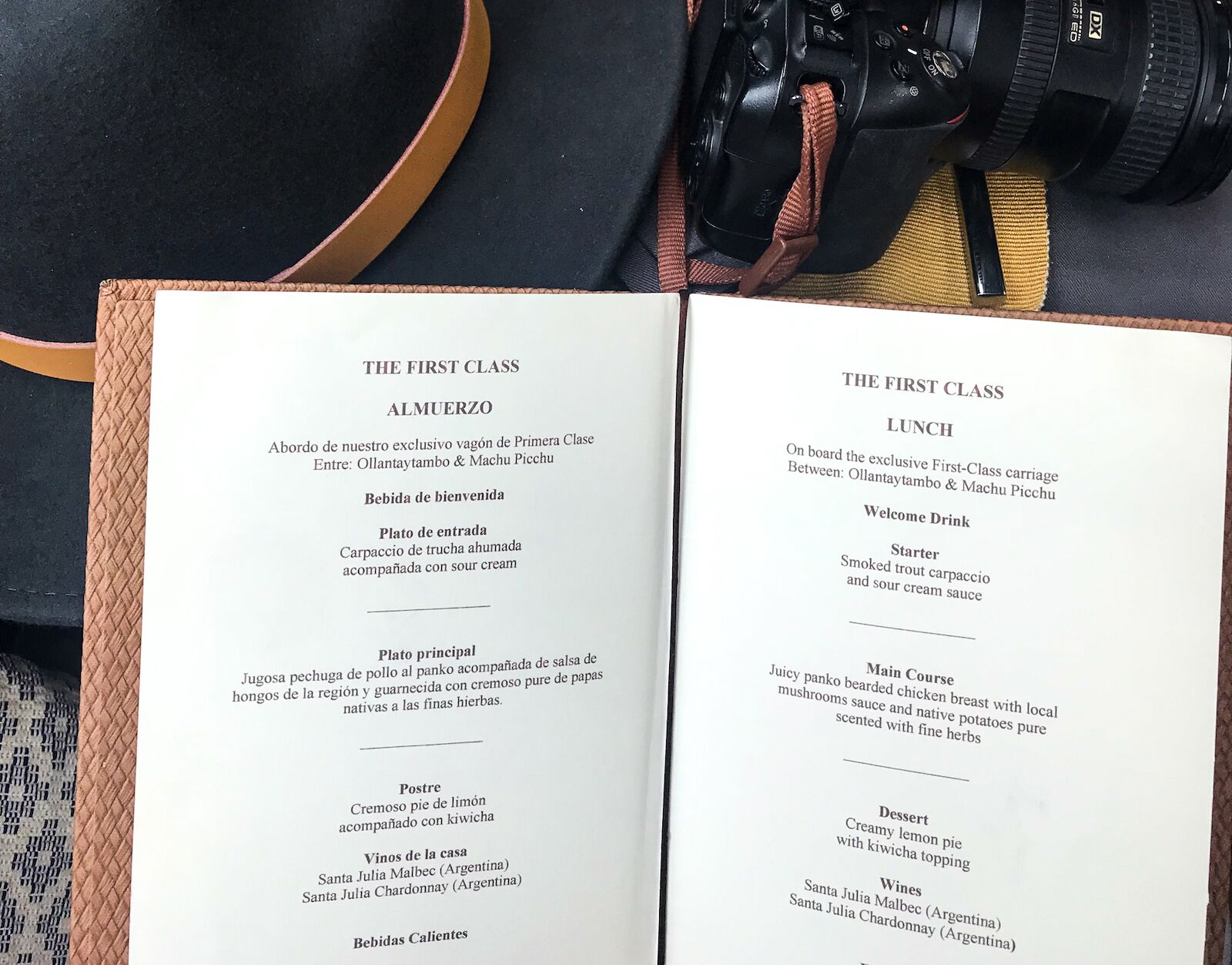
Photo: Lauren Breedlove
On the first class train, you’ll enjoy the luxury service, with a three-course lunch served with wine. Think: fancy tablecloths, actual wine glasses, and photogenic decor. Typical Peruvian dishes like smoked trout carpaccio, chicken with local mushrooms and native potatoes, and a dessert are paired with Argentinian wines such as malbecs and chardonnays. The food is actually quote good.
Don’t forget to pop into the bar and order a pisco sour, the national cocktail of Peru. The bartender will expertly whip up the tart and refreshing boozy beverage using pisco liquor, lime, egg white, and sugar. It pairs perfectly with views of the Andes.
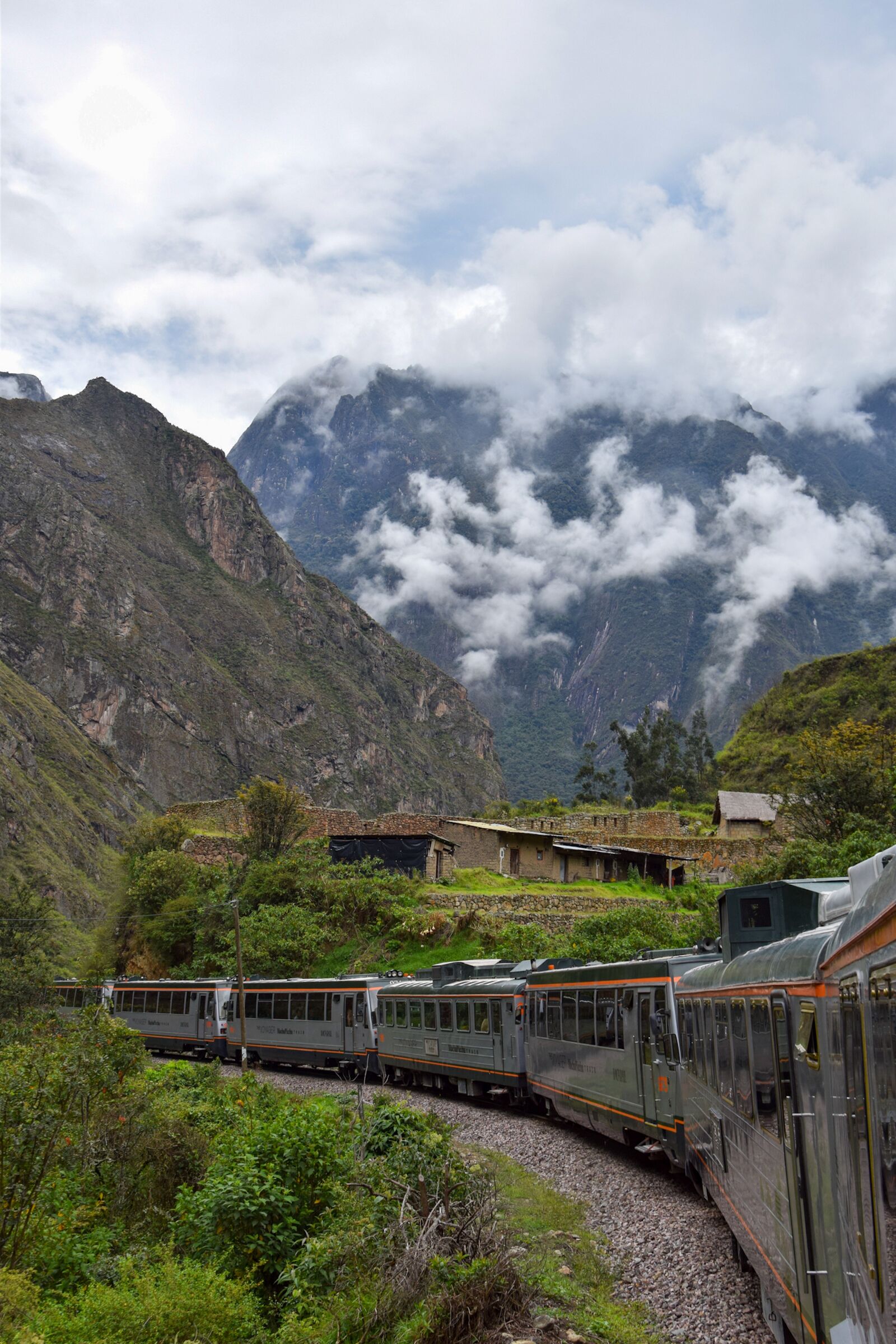
Photo: Lauren Breedlove
The train meanders through the towering Andes Mountains, including the Vilcambamba sub-mountain range, making for amazing photo opportunities. Since the tracks wind their way through the valley, it’s possible to capture shots of the outside of the train cars from the panoramic balconies on the observatory and lounge cars as it bends and turns along the tracks. At certain extremely scenic areas, the conductor will stop and announce that it’s a good time to take your camera out.
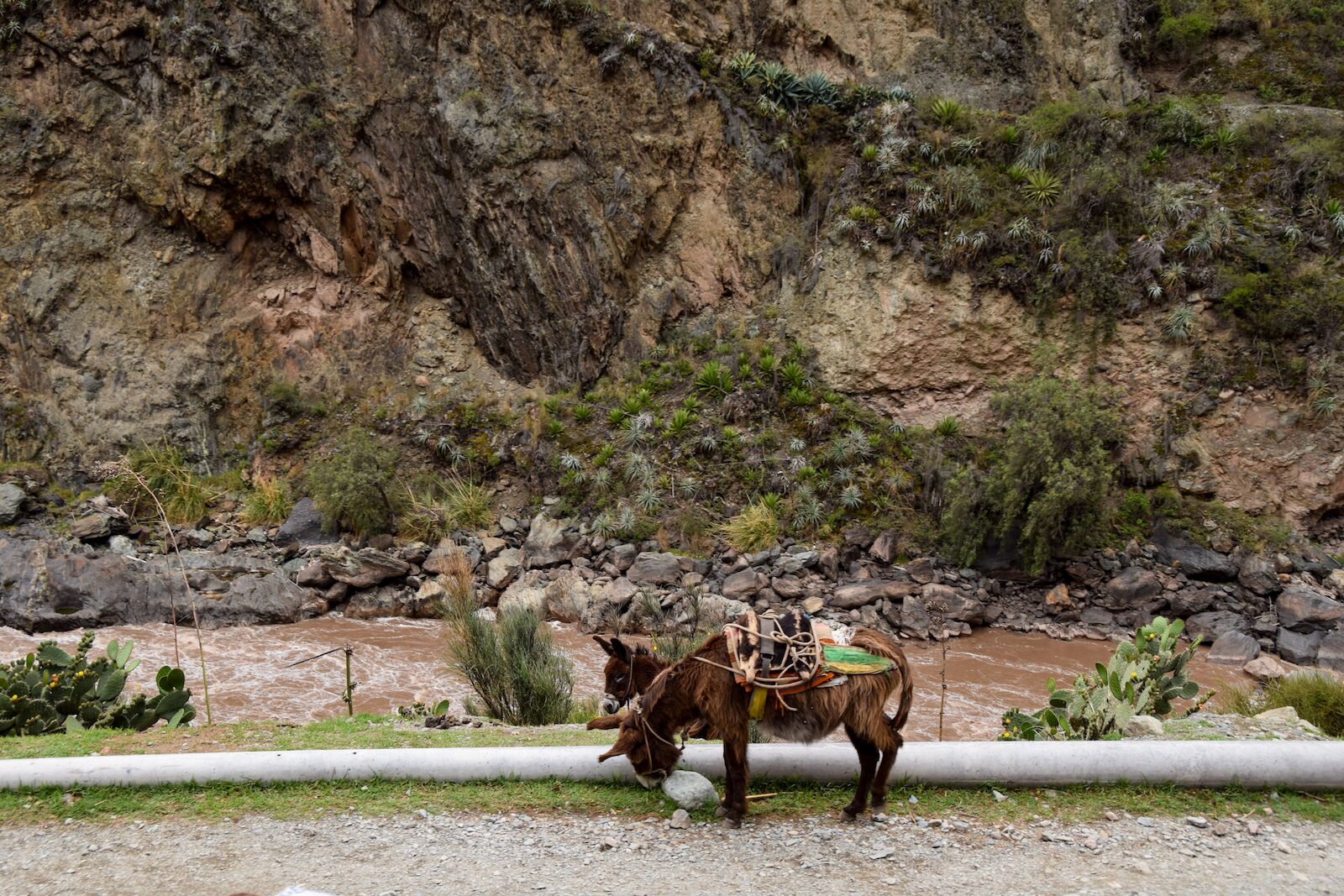
Photo: Lauren Breedlove
Pro tip: on the way to Aguas Calientes, try to snag a table or seat on the left side of the train for the best position to absorb the scenery. On the return trip, the magic will be on the right side. That way, you’ll be on the side that follows along the river with open views to the surrounding mountains and ruins. This is also where I saw two donkeys and the official start of the Inca trail, so it’s worth trying to hang out on that side of the train.
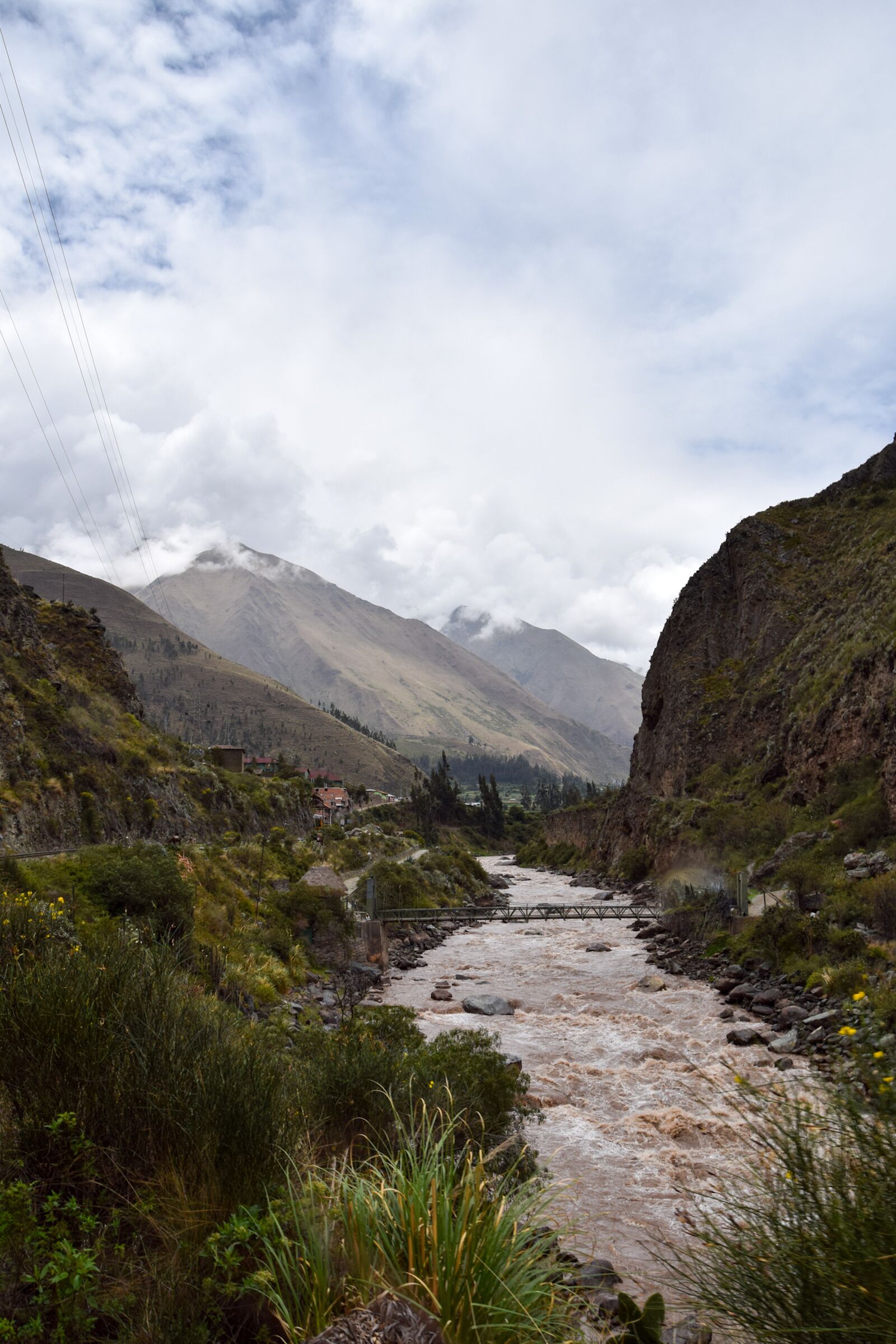
Photo: Lauren Breedlove
If you choose to leave from Cusco, it takes approximately 4 hours with the Bimodal Service. This means you’ll take a private bus from Cusco to Ollantaytambo, where you’ll then board your train to Aguas Calientes. The pick up point for the bus is at Av. Del Sol 843 Cusco (near the main square). The bus ride to the Sacred Valley takes about 90 minutes, then it’s another 90 to Machu Picchu after the train takes off.
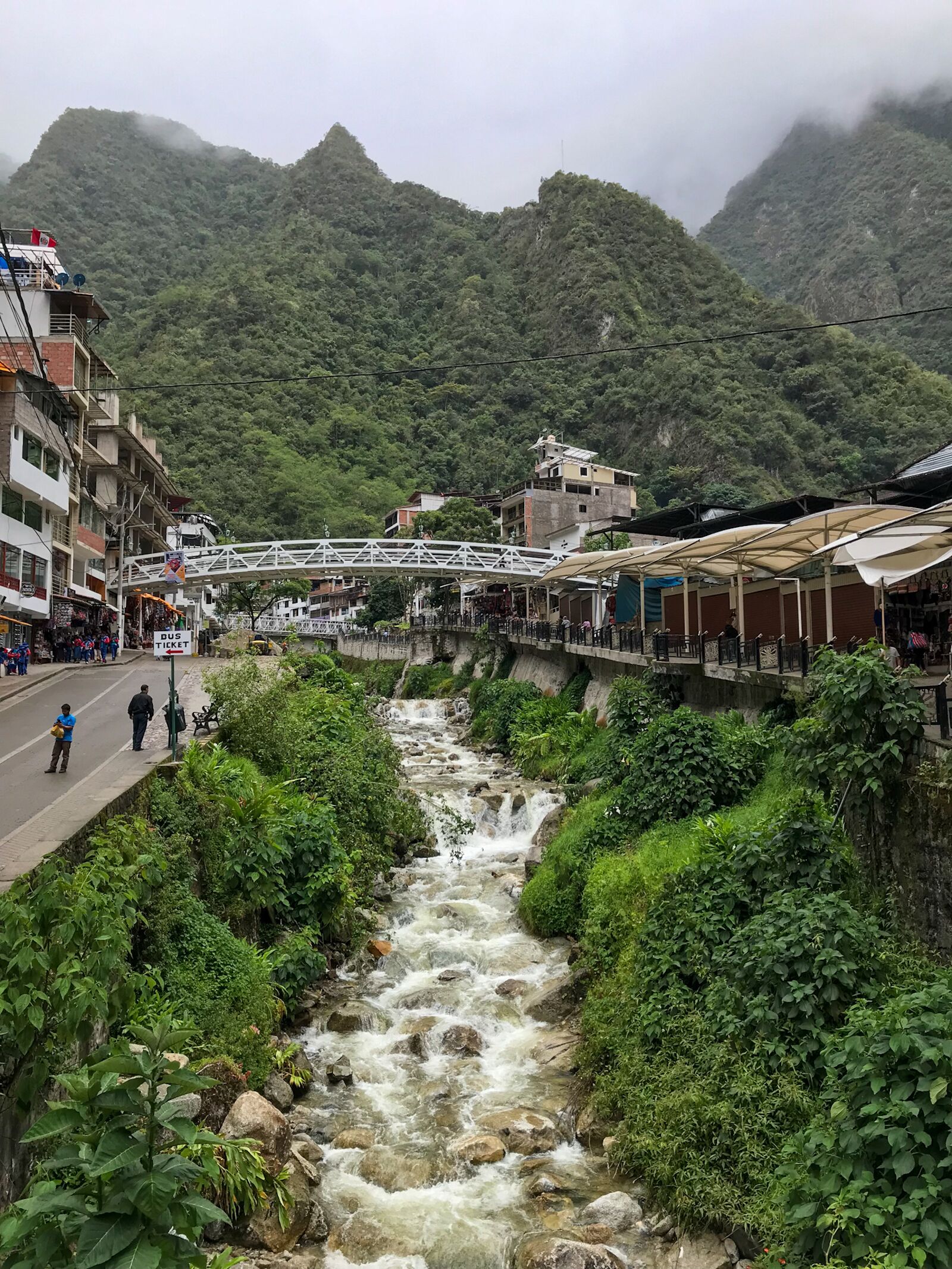
Photo: Lauren Breedlove
Machu Picchu Pueblo, or Aguas Calientes, is as close as you can get to Machu Picchu. From there, you need to take the bus or hike uphill to the famous ruins. It’s a lively village surrounded by gorgeous and verdant scenery, with hotels, restaurants, and an awesome market that’s worth browsing for souvenirs of all kinds. You’ll find vendors selling jewelry, textiles, chocolate, coffee, and of, course, super-soft alpaca products like sweaters and blankets. The market is a great spot to pick up gifts for yourself or others and just soak up the vibe of this tourist village.

Photo: Lauren Breedlove
Though there are Inca Rail options for doing a round-trip to Machu Picchu from Cusco or the Sacred Valley in one day, there are amazing hotels in Agues Calientes. If you have time, I highly recommend spending at least one night there so you can visit Machu Picchu when it’s less crowded, and soak up the Andean culture and cuisine in town.
Inkaterra has seven luxury properties throughout Peru, and their Machu Picchu Pueblo hotel is gorgeous, set on an old coffee and tea plantation. The posh hotel has walking trails through the garden, going past the property’s whopping 372 species of orchids. Rooms are white-washed adobe casitas starting around $440 a night, and the property is in walking distance from the train station. More budget-friendly options include El Mapi Hotel (starting around $174 per night) or Mapiland Boutique Hotel (starting around $68 per night), both in the center of town.
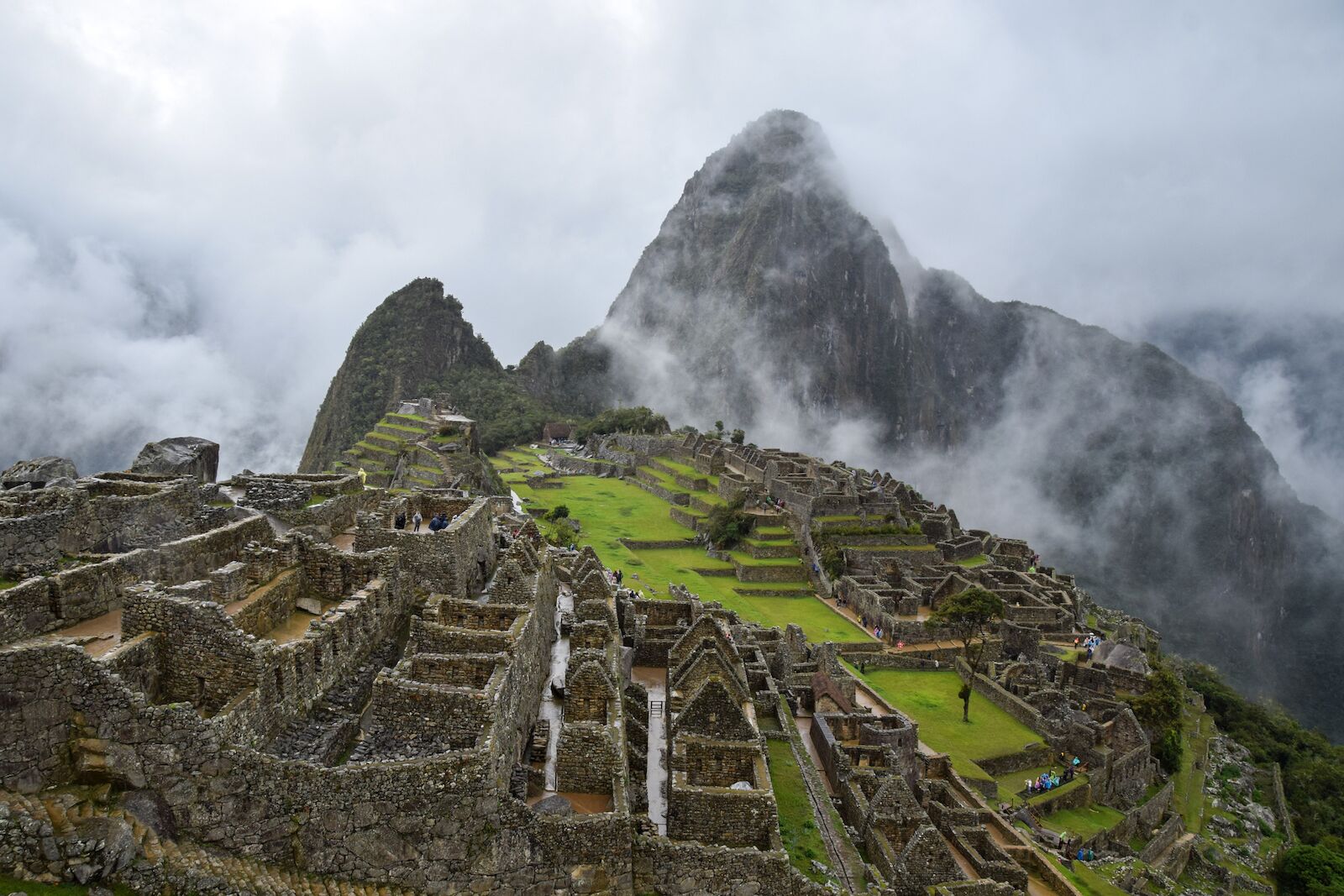
Photo: Lauren Breedlove
Ah, Machu Picchu: the entire reason for your train trip. You can only access the UNESCO World Heritage Site from Aguas Calientes by bus, which requires a ticket. If you purchase an Inca Rail First Class ticket, the bus is included in the fare (so long as you go to Machu Picchu on the same day). It’s also a private bus just for Inca Rail passengers. Otherwise, you’ll need to buy your bus ticket in town in advance atAv. Hermanos Ayar S / N, before Puente Ruinas; you’ll need to bring your ID. Round-trip bus tickets are $24 for adults and $12 for children.
The buses leave every 10 minutes starting from before dawn until 5:30 PM, and you can hop on in Aguas Calientes at Hermanos Ayar Avenue, about two blocks from the town square. No other vehicles are permitted on the road (called the Hiram Bingham route), so it’s just a constant stream of buses winding their way up to the site. The scenery on the ride up is jaw-dropping, with cliffs and towers of endless mountains peaking through clouds, giving you a taste of what’s to come in the cloud forest of Peru.
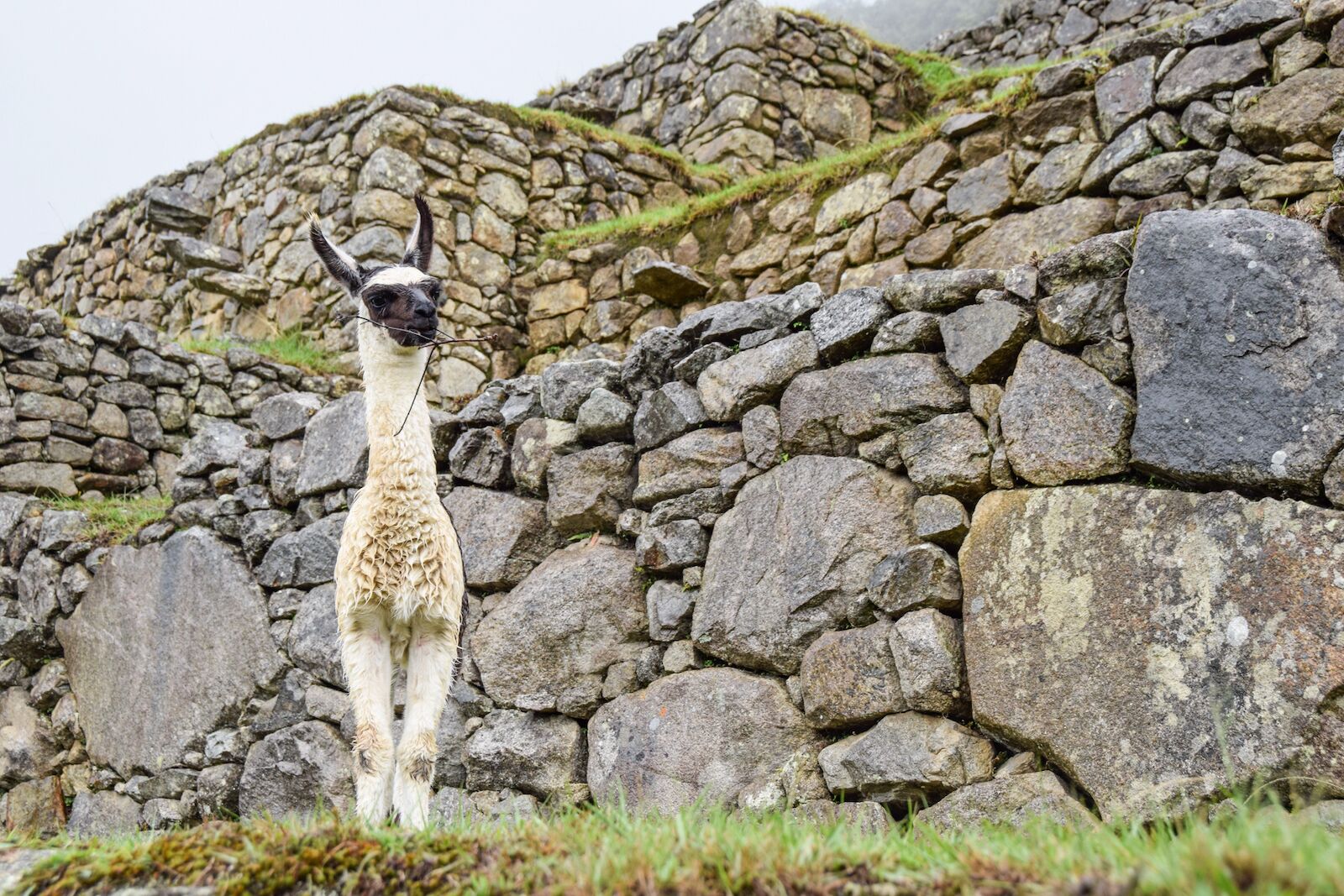
Photo: Lauren Breedlove
When you book your ticket to Machu Picchu, you’ll reserve a specific time slot and won’t be able to enter until then. Your first glimpse of that view over the ancient citadel will be a memorable one, rain or shine. Machu Picchu Mountain and Huayna Picchu peaks add to the drama, and you’ll get to see highlights with your guide such as Intihuatana (the Sun Dial), Temple of the Sun, and the Sacred Plaza, among others. Don’t forget to take a few photos of the fluffy locals, including llama, alpacas, guanacos, and vicuñas, who may just be willing to pose perfectly for you if you ask nicely.

Photo: Lauren Breedlove